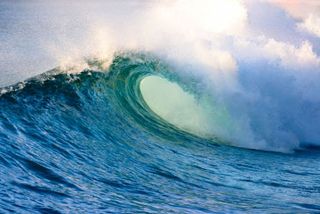'Tsunami Bomb' Created by US Military

The military has a long and honorable history, but part of that history includes some weapons' experiments that in hindsight seem downright wacky, and some even evil.
Everything from a "gay bomb" that tried to incapacitate soldiers through uncontrollable homosexual urges to extrasensory perception (ESP) experiments that attempted to give soldiers psychic vision have been the subject of serious — and failed — military investigations. And during World War II, the U.S. military devised a way to create a "tsunami bomb," reports the British newspaper the Daily Telegraph.
The tsunami bomb, developed in cooperation with authorities in New Zealand, was designed to inundate an enemy city under a 33-foot (10-meter) tsunami wave. Code-named "Project Seal," the top-secret military operation was created in 1944 after E. A. Gibson, a U.S. naval officer, noticed how using explosives to destroy coral reefs around Pacific islands would often generate large waves, reports the Daily Telegraph.
A series of tests were conducted around New Zealand during the war to evaluate the feasibility of the tsunami bomb — and when done correctly, it worked, according to Ray Waru, a New Zealand author whose book, "Secrets and Treasures" (Random House, 2012), outlines some of the military's lesser-known follies, including extensive UFO investigations.
Apparently, the correct way to create a large tsunami wave is through not one, but several bombs using some 2,200 tons (2 million kilograms) of explosives arrayed in a line about 5 miles (8 kilometers) offshore, according to the Daily Telegraph.
"If you put it in a James Bond movie it would be viewed as fantasy, but it was a real thing," Waru told the Daily Telegraph. "It was absolutely astonishing. First, that anyone would come up with the idea of developing a weapon of mass destruction based on a tsunami ... and also that New Zealand seems to have successfully developed it to the degree that it might have worked."
Concern over the effectiveness of an atomic bomb was the impetus behind Project Seal's tsunami bomb. "Presumably, if the atomic bomb had not worked as well as it did, we might have been tsunami-ing people," Waru told the Daily Telegraph.
Sign up for the Live Science daily newsletter now
Get the world’s most fascinating discoveries delivered straight to your inbox.
The program was abandoned in 1945 before the war ended, though New Zealand authorities continued to produce reports on Project Seal's tsunami bomb into the 1950s, the Daily Telegraph reports.
Follow LiveScience on Twitter @livescience. We're also on Facebook & Google+.

